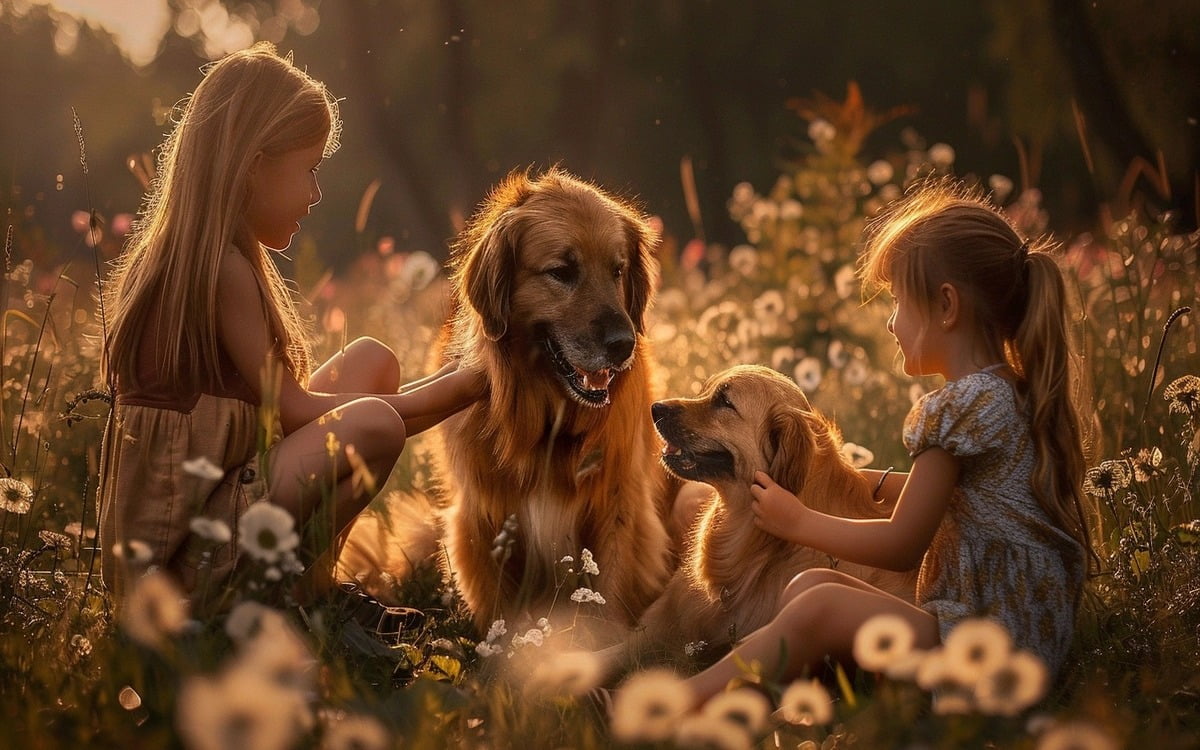Woof woof! Hey there, dog lovers! I’m Ashley Fowler, and welcome to mdogsw.com, your one-stop shop for all things canine! Today, we’re diving headfirst into the wonderful world of dog care guide. Whether you’re a seasoned dog owner or just starting your journey with a furry friend, this comprehensive guide will equip you with the knowledge and resources to raise a happy, healthy pup.
Introduction
Have you ever gazed into the soulful eyes of a dog and felt an instant connection? Perhaps you’ve witnessed their playful antics and infectious enthusiasm for life. Dogs have a way of worming their way into our hearts and becoming cherished members of the family. But before you welcome a furry friend into your life, it’s important to understand the immense responsibility and joy that comes with dog ownership.
The Importance of Dog Ownership
Dogs enrich our lives in countless ways. Their unconditional love and loyalty provide a source of comfort and companionship. Studies have shown that owning a dog can reduce stress, lower blood pressure, and even motivate us to get more exercise. They can be our furry confidantes, our playful partners in crime, and our unwavering source of support. But remember, bringing a dog into your home is a lifelong commitment. They require love, care, and training to thrive.
Your Guide to Dog Care Guide
This comprehensive guide is designed to equip you with the knowledge and confidence to care for your canine companion throughout their life stages. From choosing the perfect pup to navigating their senior years, we’ll cover everything you need to know to ensure your dog lives a happy, healthy, and fulfilling life.

Choosing the Right Dog for You
Highlight the importance of choosing a dog breed or size that aligns with your lifestyle. For instance, high-energy breeds like Border Collies or Labrador Retrievers require ample exercise and mental stimulation, while smaller, more laid-back breeds like Pugs or Shih Tzus might be better suited for apartment living.
Breed Spotlight
Instead of an overwhelming list of breeds, let’s focus on three popular options that cater to different lifestyles:
- Golden Retrievers: These gentle giants are known for their friendly and playful personalities. Golden Retrievers thrive on exercise and love accompanying their humans on outdoor adventures.
- French Bulldogs: These charming compact canines are perfect for city dwellers. French Bulldogsare relatively low-maintenance on the exercise front but still require daily walks and playtime.
- Beagles: These curious and vocal pups are known for their independent spirit and love of sniffing everything in sight. Beaglesrequire a securely fenced yard and plenty of mental stimulation to keep them occupied.
Remember, mixed-breed dogs can be just as wonderful companions as purebreds. They often come with lower adoption fees and are less prone to breed-specific health problems. Consider visiting your local shelter or rescue organization to meet some amazing mixed-breed pups waiting for their forever homes.
Welcoming Your New Dog Home
Making the Transition Smooth
Bringing home a new dog is an exciting time, but it can also be overwhelming for both you and your pup. Imagine yourself in their shoes, a new environment, unfamiliar sights and smells, and separation from everything they knew. Our goal is to create a positive and stress-free experience for your furry friend.
Puppy-Proofing Paradise
Before your dog arrives, transform your home into a safe haven. Puppies are curious explorers with a penchant for chewing. Get down on all fours and take a critical look around from their perspective. Secure electrical cords, stash away any tempting items like medications or cleaning supplies, and consider using baby gates to block off certain areas.

Essential Supplies
Be prepared with all the essentials your new dog will need to feel comfortable and secure. This includes:
- A comfy bed: Choose a bed that’s the right size for your dog’s breed and age. Pro tip: Opt for a washable bed for easy cleaning!
- Food and water bowls: Select sturdy, easy-to-clean bowls appropriate for your dog’s size. Stainless steel or ceramic bowls are popular choices.
- Collar and leash: Find a well-fitting collar with identification tags and a sturdy leash for walks and training.
- Food: Discuss food options with your veterinarian or a shelter, rescue representative. Sudden dietary changes can upset your dog’s stomach, so it’s best to stick with their current food initially.
- Toys: Provide a variety of safe and stimulating toys to keep your dog entertained and prevent them from chewing on your belongings. Rotate toys regularly to maintain their interest.
Essential Dog Care Guide Throughout Life
uilding a Happy and Healthy Bond
Now that your furry friend is settled in, it’s time to delve into the wonderful world of dog care guide! Providing your dog with proper nutrition, exercise, grooming, training, and preventive veterinary care is essential for a long and healthy life. But don’t worry, we’ll break it down into manageable steps to ensure a smooth and rewarding journey for both of you.
Nutrition Beyond the Kibble
Fueling your dog’s amazing body starts with a balanced and nutritious diet. While kibble is a convenient option, it is not the only option. Did you know there are alternative feeding options like a raw food diet or home-cooked meals? Consulting with a veterinarian is important before making any changes in diet, especially for puppies or dogs with specific health needs. They can help you create a personalized meal plan that meets your dog’s nutritional and lifestyle requirements.
| Age | Feeding Frequency | Daily Food Amount |
| Puppy (up to 6 months) | 3-4 meals | Refer to your veterinarian or food packaging for specific recommendations based on breed and weight. |
| Puppy (6-12 months) | 3 meals | Refer to your veterinarian or food packaging for specific recommendations based on breed and weight. |
| Adult (1-7 years) | 2 meals | ¾ – 1 ½ cups of dry food per day, divided into two meals. Adjust based on breed, activity level, and body condition. |
| Senior (7+ years) | 1-2 meals | ½ – 1 cup of dry food per day, divided into meals. Adjust based on breed, activity level, and body condition. |
Exercise for Every Dog
Just like humans, dogs thrive with regular exercise. It keeps them physically fit, mentally stimulated, and helps prevent boredom-related destructive behaviors. The amount and type of exercise will vary depending on your dog’s age, breed, and energy level.
Here’s a breakdown to get you started
- Puppies: Short, frequent play sessions and leash walks are ideal for growing pups.
- Adult Dogs: Moderate exercise like daily walks, playtime in the park, or engaging games of fetch are essential. Tailor the intensity and duration to your dog’s breed and capabilities.
- Senior Dogs: Gentle walks, sniffing adventures, and indoor games can keep them active without overexertion.
Grooming for Health and Happiness
Regular grooming goes beyond maintaining a sleek coat. It’s an excellent opportunity to bond with your dog and check for any potential health concerns. The grooming routine will vary depending on your dog’s breed and coat type.
Conclusion
This comprehensive guide has equipped you with the knowledge and resources to care for your canine companion throughout their life stages. Remember, welcoming a dog into your life is a long-term commitment, but the rewards are immeasurable. Their unconditional love, unwavering loyalty, and playful spirit will enrich your life in countless ways.
FAQs
What are some Signs a Dog Needs Mental Stimulation?
Destructive behavior, excessive barking, whining, pacing, or difficulty settling can indicate boredom. Offer puzzle toys, training sessions, and interactive games to keep them mentally engaged.
How Can I Create a Dog-Friendly Backyard Escape-Proof Haven?
Secure fencing is crucial. Consider adding climbing structures, digging pits, or hiding spots to satisfy their natural instincts in a safe space.
Should I Consider Doggy Daycare or a Pet Sitter When I Work Long Hours?
Both offer socialization and prevent boredom. Daycare provides a stimulating environment, while pet sitters offer personalized attention at home. Consider your dog’s personality and needs.
What are some Breed-Specific Grooming Requirements I Should Be Aware Of?
Double-coated breeds require regular brushing to prevent matting. Short-haired breeds might shed more and benefit from frequent brushing. Research your specific breed’s needs.

I’m Ashley Fowler and dogs have always been my companions from my earliest memories. Growing up, our family dog was my confidant, adventure buddy and sometimes partner in crime (sorry mom, about the chewed shoes!). That bond sparked a lifelong passion for learning about dogs – their unique personalities, their histories, and the special ways they fit into our lives. MDogsW is my way of sharing that passion and hopefully helping others experience the joy of finding their perfect puppy. When I’m not researching dog breeds, you can usually find me hiking with my trusty Beagle by my side or curled up with a cozy blanket, a cup of tea, and a stack of dog breed books.


